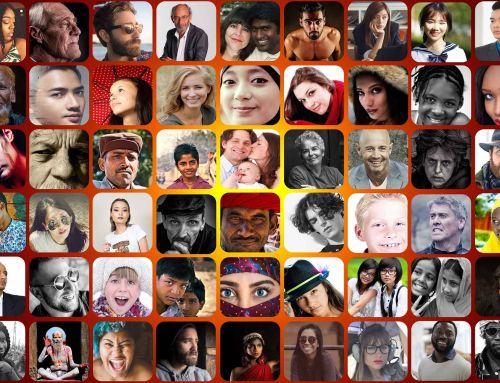The COVID-19 pandemic in 2020 left companies to rethink their marketing strategies, as several aspects of normal life were challenged.
The COVID-19 pandemic in 2020 left companies to rethink their marketing strategies, as several aspects of normal life were challenged. Since the beginning of the pandemic, businesses have had to deal with drastic changes in consumer behavior. And consumer sentiment will only keep changing, meaning marketers will have to adapt.
Q2 2021 hedge fund letters, conferences and more
A recent survey by McKinsey found that customer behavior has changed across several areas of life, with new trends emerging. For one, there has been a shift to online, as physical stores had to shut their doors and lockdowns forced people to stay at home.
A rise in unemployment has affected the amount of disposable income, which in turn has changed how people consider their purchases. For example, customers might opt for a more affordable own-brand range over branded products. And these trends and transitions are expected to continue beyond the pandemic.
To avoid appearing insensitive towards the crisis situation, marketing teams have had to rethink their approach to the messages they want to convey. What became more important in marketing was empathy. And this expectation from customers is likely to continue during 2021 and beyond — both in marketing, as well as in customer service.
What Is Empathy Marketing?
First of all, what is empathy? It is the ability to sense what the other person is feeling, to understand someone’s (or in this case, your customer’s) emotions, coupled with the understanding to perceive what they are thinking or going through.
When 2020 stirred up marketing strategies with lockdowns, new social movements, and changes in politics and the economy, a slightly different approach in marketing became crucial. As each new event in the world occurs, consumers are going through the same emotional cycles, too. To be more relatable and sensitive to what’s going on around us, marketers in 2021 should consider showing empathy in their marketing campaigns.
For example, how Nike reacted to the lockdowns with a Play for the World campaign. They knew that the customers were all stuck inside, so they encouraged people to stay in and work out at home instead. Or how Häagen-Dazs teamed up with Secret Cinema over Christmas 2020, to create a digital campaign, where their customers received a newsletter invite to an at-home movie screening. This offer was combined with a discount code for a tub of ice cream that was made available to be ordered online.
The 3 Different Stages Of Empathy
How to understand what your customers feel? There are several ways to get closer to what your customers may be going through — whether it is through social listening, surveys, interviews, or direct customer feedback. There are 3 stages of empathy in marketing to keep in mind:
-
Cognitive
Here’s an example. Let’s say your friend has broken up with their partner, you can see their sadness and disappointment. Then you gather information and ask questions about what has happened and what they are experiencing. When we practice cognitive empathy, we try to find out more about how other people are feeling.
In marketing, the same approach applies. We first try to find out more about how the customers are feeling, either through direct customer feedback or interviews, and then implement these findings in the campaigns in the next step — emotional empathy. For example, let’s assume that through questionnaires you have identified a problem — your customers are stuck at home and are unable to shop for their groceries in physical stores.
-
Emotional
The second stage is emotional or affectionate empathy. Through the information gathered in the first stage, it is easier to reflect on what to say to someone or how to act in this situation.
Emotional empathy in marketing means engaging with your customers in a way that shows them you understand how they are feeling. This can be done best either through emotional content or personalized messages. In this stage, you need to show your customers that you understand their problem — being unable to go into physical stores. For example, through a personalized marketing campaign.

-
Compassionate
Compassionate empathy means not only understanding your customer’s emotions but also taking action to help and solve these problems.
At this stage, you would offer them a solution. For example, you offer your customers home delivery for groceries — this message could be conveyed in the personalized marketing campaign, as well. So all in all: understand the customer issue + tell them you understand what they are dealing with + offer them the solution based on that problem.
The Best Way To Show Empathy In Marketing
Nowadays, there are more and more sales channels and potential ways to reach new customers. However, connecting and building trust with these customers is harder than ever. Therefore, first, let’s explore the best ways of marketing to convey emotional and personalized messages.
Video Marketing Campaigns
Video content is probably the best and easiest way to show emotion and empathy in a campaign. The best examples are video content campaigns that rely on heavily emotional content, and it works.
SMS Marketing
One other and slightly more affordable option to send personalized messages is through SMS marketing. Text messages are fast, personal, and direct – the average open rate of messages stands at around 98%, with 95% being read within 15 minutes. SMS marketing should be included in the marketing channel mix, as it provides a more personal approach and speed in communication.
Empathy Marketing Examples
An empathy marketing strategy should be able to go beyond the data. Arielle Peters, Founder and Senior Creative Director of Two Giraffes, emphasizes the importance of an empathy strategy and says, “Data-driven marketing is important and helps us understand who our customers are demographically. But equally if not more important is results-driven marketing. Results occur when customers act. When you understand your customers’ psychographic profiles and know what affects their behavior, then you have the foundation for a powerful story that will achieve empathy and action.”
“Being able to put yourself in your customers’ shoes and showing them that you can relate to their challenges is key. And what better way to convey this than with video marketing. Video is a powerful medium and activates so many senses with music, vision, and more. When you craft an effective story it has a measurable effect on the brain, one that matches up with people’s actions. One of those effects is oxytocin because a good story will involve people emotionally. They tap into viewers’ empathy and generate feelings of trust,” says Peters.
Peters further goes on to say that, “The brain also releases dopamine and cortisol, all quantifiable feelings that create positive emotions within the viewer, increasing memory and brand recall. When your empathy marketing hits all the right notes in the brain, amplified by the right media distribution campaign, that’s when the magic of storytelling occurs; it builds trust, brand saliency and generates results for your business.”
It really comes down to seeing the world from their perspective and customizing the marketing efforts to fit that experience. And it isn’t just about understanding your customers, it is also about coming up with the right solution and value proposition. Using a willingness to understand and recognize the problems, motives, and emotions of your audience will allow you to implement these perspectives in your marketing campaigns. That said, here are some excellent empathy marketing examples to get you thinking.
Related: 3 Ways to Handle an Upset Customer That Actually Make Them More Loyal to Your Brand
-
IKEA: Stay At Home
IKEA Spain understood people’s frustration over staying at home. They launched a video campaign with a message that instead of viewing lockdowns as a bad thing, people should take the time to enjoy the comfort of their homes. They understood that during lockdowns, it was the perfect time for consumers to redecorate and rearrange their houses, offering a solution — a link to their e-store.
-
NIKE: Play Inside, Play For The World
Right at the most appropriate time, Nike released the “Play for the world” campaign about staying home during lockdowns. They stressed the message to stay at home but also offered a solution: working out at home is also a good and totally doable alternative option.
Nike athletes and representatives then posted and shared the campaign’s post on their social media channels, from top athletes Tiger Woods, Carly Lloyd, Christiano Ronaldo to football clubs like FC Chelsea.
-
DOVE: Reverse Selfie
Dove is known to engage with its target audience through empathetic marketing campaigns. In their most recent campaign, Dove understood the problem of the digital age consumers.
The research found that by the age of 13, 80% of girls heavily edit the pictures they post online. Their customers are mostly females aged 16 to 35, all active on social media. Dove used this knowledge to promote a healthy body image through the “Reverse Selfie” campaign, a video showing which digital tweaks and filters were used to edit the selfie.
-
American Greetings: World’s Toughest Jobs
Even though not current, this campaign is my personal favorite. In 2015, US greeting card company American Greetings launched the “World’s toughest jobs” campaign. To show how being a mom is a full-time job, and actually one of the hardest jobs there is, they created a real job ad and had held actual interviews.
They recorded several interviews for the position of “Director of Operations”, describing a job that doesn’t allow breaks and leaves little to no time to sleep or eat. On top of this, the candidates must be on their feet all day and won’t be offered any remuneration, basically describing everyday aspects of being a mother.
-
Zalando: We Will Hug Again
In August 2020, Zalando launched the “We will hug again” campaign, reflecting on the difficult situation that we are all facing globally. It focused on human closeness and the ultimate expression of human connection — a hug, that shows empathy and solidarity.
The campaign understood that many of us may be struggling and that unity and sticking together should be more important than ever, and that above all, things will get better. The emotional meaning and empathetic approach can be felt throughout the campaign.
2021 And Beyond
The pandemic has had a major impact on how people view brands and businesses and how consumers consider their purchases. In 2020, the world faced several challenges and changes. For any business that aims to relate to its customers and aspires to create an emotional connection, empathy marketing should be implemented in their overall business strategy — from marketing to customer service and sales.
Through emotional connection and empathetic approach, brands have to rethink their approach and look at things from their customer’s perspective, putting themselves in the minds of their target audience. Only then can businesses convey relatable messages and achieve a positive outcome and connect with customers.
Related: Making Highly Watchable Videos: A 4-Step System to More Eyeballs



























Leave A Comment
You must be logged in to post a comment.